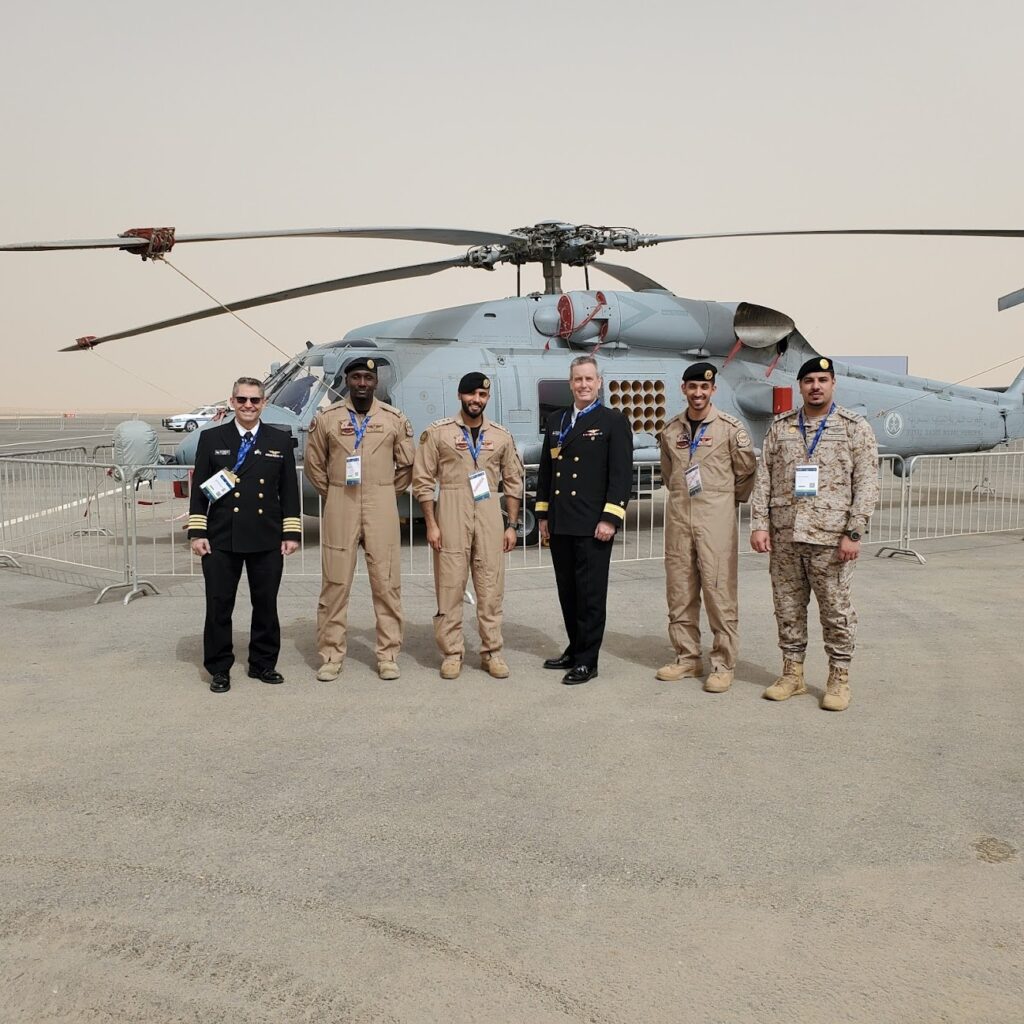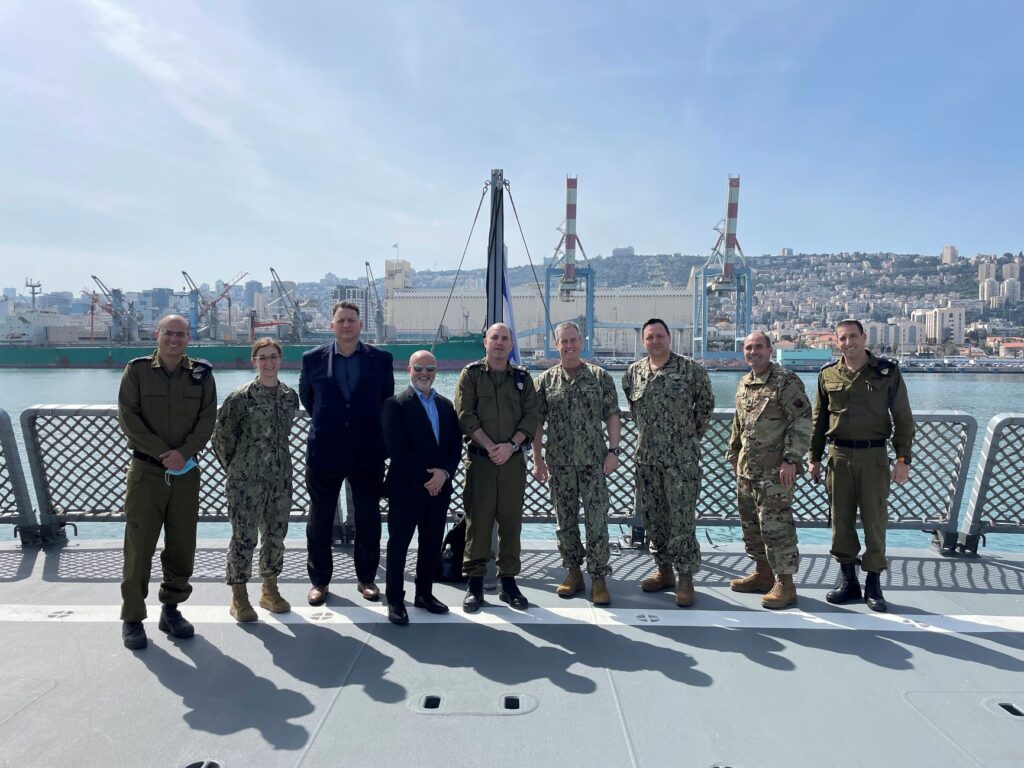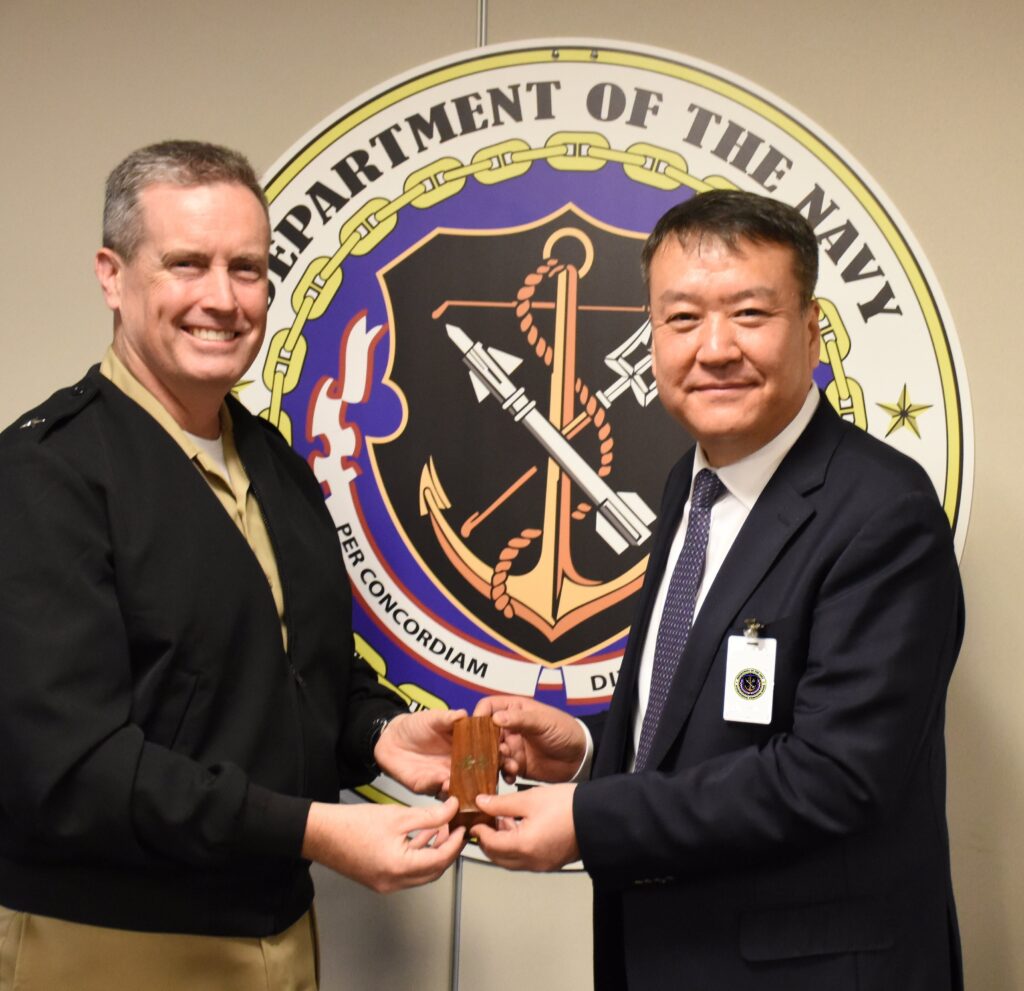
The Navy International Programs Office manages and implements international security assistance programs, cooperative development programs and technology security policy. Led by Rear Adm. Anthony E. “Tony” Rossi and Steve Bowdren, Navy IPO is a reporting unit to the Assistant Secretary of the Navy for Research, Development and Acquisition and is an Echelon II Command to the chief of naval operations. It supports regional combatant commanders’ and Navy leadership’s efforts to build vigorous relationships with U.S. maritime security partners around the world. Rossi answered questions from Seapower Deputy Editor Brett Davis.
With all that’s going on in the world, it seems NIPO’s mission is more important than ever. To what extent do fast-moving threats, such as the war in Ukraine, affect your work?
Rossi: Our mission is to strengthen global maritime alliances, partnerships, and coalitions through security and technology cooperation. In today’s environment, multilateral relationships are more important than ever, particularly in areas of defense and security. As part of the Department of Defense, NIPO’s mission supports a whole-of-government approach to Russian aggressive actions toward Ukraine.
How does NIPO’s work strengthen U.S. security?
Rossi: NIPO is a key player in strengthening relationships with our allies and partners while enhancing interoperability and increasing maritime domain awareness. Investing in these relationships is critical in defending sovereignty from authoritarian influence and coercion.
How would you characterize the current state of interoperability between the U.S. and its allies?
Rossi: First, I think it’s important to define interoperability. I define it as platforms or systems that can operate together to complete a mission. That said, I think that the current state of interoperability between the U.S. and our allies and partners is always improving and expanding. Each year we hold cooperative exercises and execute cooperative deployments to test and prove our interoperability. For example, last year the U.S. Marine Corps conducted a first-ever cross-decked operation highlighting interoperability of the F-35B, underlining the strategic importance of the joint integration with the United Kingdom Carrier Strike Group. We also conducted multi-carrier operations in several theaters.
What are some ongoing challenges as you seek to create greater interoperability?
Rossi: As we continue to integrate more of our systems, the challenge lies within tying distributed sensors with distributed effectors that identify and stop potential threats over various networks and architectures. This not only is an ongoing challenge, but it hinders the ability for greater interoperability with our allies, given that they may have different systems, architectures or data standards. Even if our allies have the same systems as the U.S., there are other technical impediments that create a challenge, not to mention training and logistics that also need to be addressed to have a viable and sustainable interoperable capability.

How important is it to have a full-spectrum approach for Foreign Military Sales, instead of just selling hardware?
Rossi: When FMS customers enter into an FMS case with the U.S., they aren’t just purchasing a system. They’re purchasing all the services that go with that system — training, spare parts, follow-on support, etc. We refer to this as the “total package approach,” and it is our absolute advantage and strength in competing internationally. Eighty percent of the total cost of a platform or system over its lifespan is sustainment, spanning from equipment deployment to equipment decommissioning. A crucial element of any FMS contract we offer is sustainment: the provision of parts, services and training to ensure our product stays fully mission capable throughout its life cycle. There are international examples where this is not the case — a client nation’s military receives shiny new equipment but is ultimately hamstrung by sustainment issues that hinder their ability to keep the equipment fully operational or render this capability moot.
What is the current operational tempo of the Foreign Military Sales program? Have there been more FMS transactions in recent months and years?
Rossi: If you look at FMS sales in the past few years, you would see the record-breaking $22 billion spike in 2018, which indicated the changing world as we transitioned out of the Cold War era. Since then, we have been averaging $11 billion-$12 billion in annual sales. In FY21, we had a 9% increase from the previous year, resulting in $12.41 billion in FMS execution. I would say that this has been maintained throughout the pandemic, and we are generally on track to reach it again this year. While we are maintaining our average, its important to note that FMS is a long and complex process, so most of these cases were in the queue before COVID-19. We have seen countries reassessing their arms imports since the pandemic both positively and negatively. For example, Germany entered into a $1.7 billion FMS contract for P-8A aircraft and accompanying services and equipment.
Are you getting more FMS requests for certain types of systems?
Rossi: Tactical fixed- and rotary-wing aircraft remain most prevalent in FMS sales cases. However, in recent years, some allies have shown interest in acquiring state-of-the-art multimission surface ships and combat systems. This appears largely cyclic in nature, as some ally fleet assets are reaching the end of their lifespan. In addition, there has been a constant demand for weaponry and associated support systems.
What steps have you taken to speed up the process for Foreign Military Sales, and which has proven the most effective?
Rossi: The “Speed” initiative has been an ongoing effort at NIPO. Over the years, NIPO has been able to assess the FMS process and determine ways to compress the timeline. We have successfully been able to expedite delivery of coalition capacity and capability from when the requirement is understood to when the article or service is delivered. We have done this by implementing “tactical” fixes to tighten the process, but our major achievement to date has been in the area of disclosure policy.
Typically, developing this policy, a one-to-two-year undertaking, has begun after formal sales approval has been received. We now get a jump on the process — when it is deemed likely that an ally’s sales case will be approved, we begin parallel development of disclosure policy. This could halve the time required for this phase of the FMS process.
We continue to reevaluate what we do and how we do it in the spirit of [Chief of Naval Operations Adm.] Gilday’s drive for the Navy to “get real, get better.”

What impact has the worldwide pandemic had on your operations, and have you made any permanent changes in response to it?
Rossi: While we recognize that the COVID-19 pandemic disrupted some planned production and delivery, we have seen at the height of the pandemic countries sign large contracts for major arms. INDOPACOM [Indo-Pacific Command], EUCOM [European Command] and CENTCOM [Central Command] portfolios experienced the greatest volume: INDOPACOM expects over $6 billion in sales across nearly 500 FMS cases, EUCOM over $5 billion across over 500 cases and CENTCOM, $1.25 billion across 230 cases.
In terms of volume, we have actually seen about a 15-20% increase in sales and support during the pandemic. This includes LORs [letters of request] received, LOA/amendments [letters of offer and acceptance], third party transfer, international agreements, TS&FD [technology security and foreign disclosure] policy achieved, even partner/industry engagements.
As we emerge from COVID, the Navy as a whole is now assessing lessons from operating largely remotely over extended time, and there are many positives. I can tell you NIPO aptly met the challenges of working from home and was even able to ramp up to meet a surge in business. Now we, like many organizations, are looking to how we return to the workplace more while keeping what worked during COVID and changing what didn’t.




